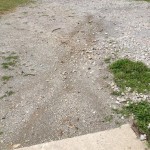RECENT ARTICLE IN THE NOBLESVILLE TIME
Monday, April 6th, 2015
By Sadie Reecer sadie@thetimes24-7.com
CICERO — The Town of Cicero can’t be accused of not caring about the environment. With three major projects revolved around keeping Morse Reservoir, a mainstay for the town, clean, residents and local critters should be thankful. “The Town of Cicero has taken a proactive approach to protecting one of our greatest assets, Morse Reservoir,” said Paul Munoz, plan director for the Town of Cicero. “We want to make sure that we are being environmentally responsible with our parks while educating the residents on the importance of doing the same.” Through the Upper White River Watershed Alliance, Munoz, on behalf of the Town, applied for three separate grants, available because of Section 319 of 1972’s Federal Clean Water Act. The section of the law provides funding to municipalities to develop and implement watershed management plans.
The Town received more than $36,000 by applying for the grants, and through the hard work of Cicero Parks and Recreation, Cicero Utilities and the Cicero/ Jackson Township Plan Commission, the Town’s matching portion of the grant was almost completely covered by donated labor and materials for the three projects at Red Bridge Park.
All three projects were started last fall, were completed by November, and will be in full bloom this spring for guests of the park to enjoy.
Heavy Traffic Area Project
In the town’s Red Bridge Park, 1050 S. Pearl St., the boat launch and ramp needed some work with reinforcement after years of use by different organizations and emergency watercraft. The Morse Waterways Association (MWA) uses the ramp to clean up the reservoir twice a year, pulling large debris from the water. The Rehabilitation Hospital of Indiana also uses the area annually for a watersports event for their patients.
work with reinforcement after years of use by different organizations and emergency watercraft. The Morse Waterways Association (MWA) uses the ramp to clean up the reservoir twice a year, pulling large debris from the water. The Rehabilitation Hospital of Indiana also uses the area annually for a watersports event for their patients.
Munoz said that the area had been visibly been losing stabilization, becoming muddy with sparse grass with large ruts from the vehicles. So the town’s planning department, parks department and utilities department teamed up to start complete the project. “The Heavy Traffic Area Project addressed the problems by digging out and leveling a large (hole) and then adding in a compacted bed of rock and gravel,” Munoz said. “This area added a porous surface for vehicles and large equipment to maneuver while also giving MWA an area to pile debris and trash.” Munoz said in addition to filling and resurfacing, the shoreline of the area was lined with native plants that would help filter any water that made its way up.
Bioswales Project
 The Town of Cicero built nine bioswales at Red Bridge Park to filter and prevent contaminants from the park’s community center parking lots from entering Morse Reservoir. Bioswales are landscape elements that remove silt and pollution from surface runoff water. The project for the natural alternative to a storm sewer not only is keeping the reservoir tidy, but is also providing more green space for the town. With help from the Cicero and Jackson Township Plan Commission, Hamilton County Master Gardeners and other volunteers, Cicero has added three large bioswale gardens that cover nearly 4,500 square feet. Together, the groups planted more than 4,200 native plants, including grasses, shrubs, forbs and a tree.
The Town of Cicero built nine bioswales at Red Bridge Park to filter and prevent contaminants from the park’s community center parking lots from entering Morse Reservoir. Bioswales are landscape elements that remove silt and pollution from surface runoff water. The project for the natural alternative to a storm sewer not only is keeping the reservoir tidy, but is also providing more green space for the town. With help from the Cicero and Jackson Township Plan Commission, Hamilton County Master Gardeners and other volunteers, Cicero has added three large bioswale gardens that cover nearly 4,500 square feet. Together, the groups planted more than 4,200 native plants, including grasses, shrubs, forbs and a tree.
Munoz said that large diagram display signs of the final project and layout of the area will help educated residents about the importance of bioswales, rain gardens and native plants to protect Morse Reservoir.
Rain Garden Project
Of the town’s newer projects, the Red Bridge Rain Garden Project has drawn some of the most excitement. After identifying an erosion issue at the entrance to the park, Munoz said the Town decided the area would be a perfect place to make a statement about protecting the environment. “The area is now a main focal point for the community as it is the trail head for the new $3 million Jackson Street Causeway Project,” he said. “(So), the Town partnered with (environmental engineer) Cardno/JFNew to help design an amazing rain garden for this area.” The rain garden will again use native plants like the ones from the bioswale project to implement a deep root system that would collect and absorb excess stormwater runoff that otherwise would head back into the reservoir or potentially cause flooding. “The project utilizes a dry creek bed look with an array of over native plants and trees to line the rain garden,” Munoz said.

